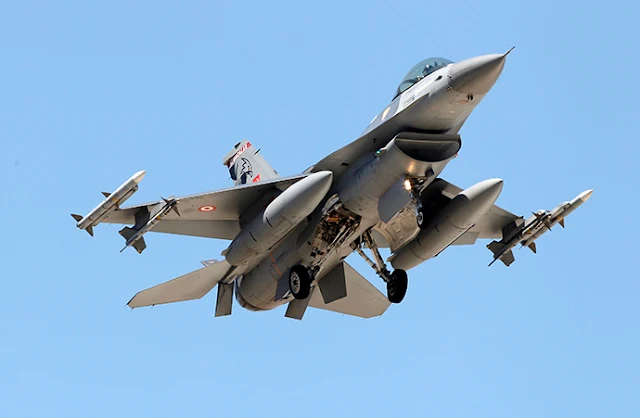Israeli
Merkava tanks roll during a military exercise in the Israeli-annexed Golan
Heights near the border with Syria on July 18, 2013. (AFP Photo / Jack Guez)
ED Noor: Ever since he
was holed up in Libya and threatened by MSM reporters for his honesty during the siege of Tripoli, I have
followed the factual and insightful work of Mahdi Darius Nazemroaya. As reporters go he puts it on the
line every time and says what must be said.
By Mahdi Darius Nazemroaya
July
19, 2013
Prime
Minister Erdogan and his AK Party government have a track record of being
deceitful, especially in regards to both Israel and Syria.
No one
should be surprised to hear that Israel and Turkey are collaborating together
against the Syrians. With the aim of tightening the front against Syria, President
Obama even travelled to Israel in March 2013 to directly broker a quick
rapprochement between the governments of Israel and Turkey.
Getting a
public nudge from the Obama Administration, Israel and Turkey would announce
that their diplomatic row was over only two days after NATO announced it had
put together contingency plans for operations in Syria on March 20, 2013.
Even when relations were publicly sour between Ankara and Tel Aviv, the two countries maintained military and commercial ties.
Despite the
fact that Prime Minister Erdogan denounced Tel Aviv for attacking Syria, the
first fruits of Israeli and Turkish collaboration became visible in May 2013
when Israeli warplanes attacked a Syrian military research facility in the town
of Jamraya with US approval, as admitted by President Obama to Telemundo.
Right after
the Israeli attacks the Turkish and Israeli militaries launched simultaneous
exercises on their respective borders with Syria. Although the military
operations were presented as uncoordinated events, both Ankara and Tel Aviv
were coordinating with one another in a military posture against Syria.
The Israeli
and Turkish moves on their borders with Syria were probably aimed at preventing
Syria from responding through intimidation. The Turkish government would also
put extra pressure on the Syrians by blaming them for a terrorist attack in the
Turkish border town of Reyhanli, which the Turkish activist group of internet
hackers named Redhack would reveal was known about well in advance by Turkey’s
Gendarmerie Intelligence.
.
.
ED Noor: Israeli cartoon re Latakia. The creator laments that it is shameful that both Russia and America are using Israel as a battleground!
.
.
WHAT HAPPENED IN LATAKIA?
Just when it
began becoming apparent that the US and its allies were facing serious regional
setbacks in the Middle East and North Africa, reports began circulating about
an explosion in Latakia.
Unverified
reports, originating from anonymous sources in Israel in early July 2013, began
claiming that Tel Aviv had launched an attack against the Syrian port of
Latakia that caused a massive explosion.
As the
rumours began to circulate in the media, it was dubiously claimed that the
Israeli attacks were launched against shipments of Russian-made S-300 air
defence systems that were in the process of being delivered to Syria by the
Kremlin.
US officials
would enter the picture by deliberately leaking more information about what
happened in Latakia by claiming that Israel used its air force to bomb the port
there to destroy a military depot filled with Russian-made Yakhont land-to-sea
anti-ship missiles.
Then, on
July 15, RT’s Paula Slier would report from Tel Aviv that Israel had attacked
Latakia by using a Turkish military base. This would upset the Turkish
government, which would deny it and say anyone making the claims was involved
in an “act of betrayal.”
In response
to the Russian report, Turkish officials would up the ante by claiming that the
Russian anti-ship missiles in the Syrian port were destined for Hezbollah in
Lebanon and that the US and Israel had coordinated the attacks by holding
meetings in Turkey with the anti-government militias operating inside Syria.
Uzi Mahnaimi would complicate the matter by reporting through the British press that the Israeli attacks were launched from a German-built Dolphin from the sea, which essentially vindicated Turkey by refuting the claim that a Turkish base was used by the Israelis.
Syrian "rebels" head to the town of Bsankol in the north western province of Idlib to join comrades fighting regime forces for the control of the highway that connects Idlib with Latakia on July 11, 2013. (AFP Photo / Daniel Leal-Olivas)
What has to be understood is that countries like Turkey and Saudi Arabia conceal their collaboration with Tel Aviv due to the heavy opposition against the Israeli occupation of Palestine among their respective societies.
What is also
important to note is that a Turkish jet was downed in 2012 by Syria when it was
following a route that was used by Israeli jets near the Syrian-Turkish border.
The use of this aerial route by Tel Aviv has never really been challenged by
Turkey. It is also part of an important pattern that shows how close the
tactics used by Israel and Turkey against Syria are.
FROM TURKEY WITH LOVE! (The
first time around)
On June 22,
2012 a Turkish F-4 Phantom fighter-bomber from Malatya in Turkey was shot down
above Syrian airspace. There would be conflicting reports about the fate of the
pilots. The Turkish media would report that they were rescued while Syrian
sources would claim that they were captured. The fighter-bomber’s two pilots,
however, would reportedly be found dead trapped under the jet’s wreckage almost
two weeks later.
Perhaps
coming as a surprise to many, the Syrian and Turkish governments would conduct
joint search and rescue efforts to find the airplane’s wreck and the two
missing pilots. Damascus would even allow Turkish rescue units to enter Syrian
territorial waters and make the proposal that a joint Syrian-Turkish military
committee be formed to investigate what really happened. Syria would even
apologize to Turkey and argue that its troops thought that the Turkish warplane
was an Israeli jet violating Syrian airspace.
Initially,
it was clear that the Turkish government did not know how to react and made
several contradictory statements. Erdogan would even say that he was unaware if
the Syrians had shot the jet down and was waiting for precise information about
the incident.
Ultimately,
Ankara would claim that the Turkish jet was shot down by the Syrian military
without any warnings inside international, airspace above the Mediterranean
Sea. Later the Saudi-owned Al-Arabiya network ~ the Fox News of the Arab World
~ would claim that the two Turkish pilots were executed by the Syrians and had
their corpses planted into the wreckage under instructions from the Russian
government, which also directed Damascus to apologize and then tried to manage
the entire event.
What had
caught the Turks, and NATO, by surprise was the fact that the Syrians had
detected the F-4 fighter-bomber. The Turkish jet was actually spying against
Syria on an intelligence mission conducting low altitude reconnaissance work
and testing the air defence systems of Syria. This is why the Turkish
government quickly changed its position several times. Expecting to be exposed,
the Turkish governments at first played stupid. At the outset Turkish officials
talked about the incident like it was a mistake. They even admitted that the
Turkish plane had crossed into Syrian airspace, but said it was an honest accident
during a training mission. When Damascus said nothing, however, Erdogan and his
government began to aggressively blame the Syrians of unjustified
aggression.
A Turkish F-16 fighter jet approaches the tarmac of Incirlik airbase in the southern Turkish city of Adana July 4, 2012. (Reuters / Umit Bektas)
The Syrians
would respond to Ankara’s lies by relying on the technical facts. From a
technical standpoint the Turkish government’s story that Ankara’s jet was shot
by the Syrian military while it was flying outside of Syrian airspace over the
Mediterranean Sea was impossible. The reason was that the Turkish warplane was
downed by an anti-aircraft artillery machine gun with a maximum range of 2.5
kilometers, which can only operate from land and operates on the basis of
visual confirmation.
It would
have been impossible for the Syrians to use the anti-aircraft machine gun to
target the Turkish jet if it were in international airspace, because it was out
of firing range. Surface-to-air missiles would have had to been used instead by
the Syrians.
Moreover,
Syria would even warn NATO as a whole, after Turkey called a NATO consultative
meeting under the Washington Treaty’s Article 4, not to even think of violating
Syria’s airspace, territorial waters, or land borders.
Many of the
same tactics that were used against the Libyans by Turkey and NATO have been
recycled against the Syrians. The failed Turkish spy mission for NATO in 2012
was actually a repeat of what happen to Libya in 2011.
A Syrian
pilot had defected by flying with his jet from Al-Dumayr, just northeast of
Damascus, to Jordon’s King Hussein Air Base in Mafraq on June 21, 2012. The
Syrian pilot, Colonel Al-Hamadeh, even sent his family out of Syria to Turkey
before he defected. From Jordon his Syrian jet’s flight codes were passed to
NATO and Turkey to disguise or cloak their aerial units as friendly Syrian
ones.
The Turkish
military and NATO had tried to disguise the Turkish F-4 Phantom fighter-bomber
as a Syrian jet using the stolen codes. The Syrians, however, were aware of
what happened earlier to Libya when two Libyan warplanes defected to Malta and
handed over their military flight codes to NATO, which used those codes months
later when it attacked Libya as a means of bypassing Libya’s air defence
system.
THE AK PARTY’S DIRTY
HANDS
The AK Party
has dirty hands and has tried to hide many of its activities from its own
citizens. When the idea that a Turkish military jet could have been involved in
operations against Syria was reported in 2012 by members of the Turkish media,
the AK Party government began a very aggressive campaign to censor them. The
Turkish government began drafting new media laws to prevent criticism against
the Turkish government and Erdogan attacked the Turkish newspaper Cumhuriyet
and anyone that dared to question the official narrative provided by his
government as a “traitor” and “enemy of the state.”
Skeptics
cannot be blamed for thinking that the story about the Israeli military strike
on Latakia was planted to disguise the miserable failure of Washington’s regime
change project in Syria, Israel’s growing fears about the regional environment,
and the regional decline of the Muslim Brotherhood.
Despite
Ankara’s denials, the revelation of Turkish involvement in the events
surrounding Latakia is pushing the different players involved to talk more. It
should be remembered that Prime Minister Erdogan and the AK Party government in
Turkey have a track record of being very deceitful, especially in regards to
Turkey’s cooperating with Israel and their government’s aggression against the
Syrians. In this context, the news that Israel used a Turkish base against
Syria to avoid detection should come as no surprise either. Even the same
tactical approaches were used by both the Israeli and Turkish militaries in
regards to entering Syrian airspace from the Syrian Arab Republic’s
northwestern coast.
Things will
become cleared once, and if, more governments start talking openly about the
events that occurred in Latakia. Only then can there be a clear picture of what
really happened in Latakia. Nevertheless, there should be no mistake about it
that the Israeli-Turkish alliance never really ended and that Israel and Turkey
are comrades-in-arms against the Syrians.





No comments:
Post a Comment
If your comment is not posted, it was deemed offensive.